How to Make the Perfect Burger: 9 Tips
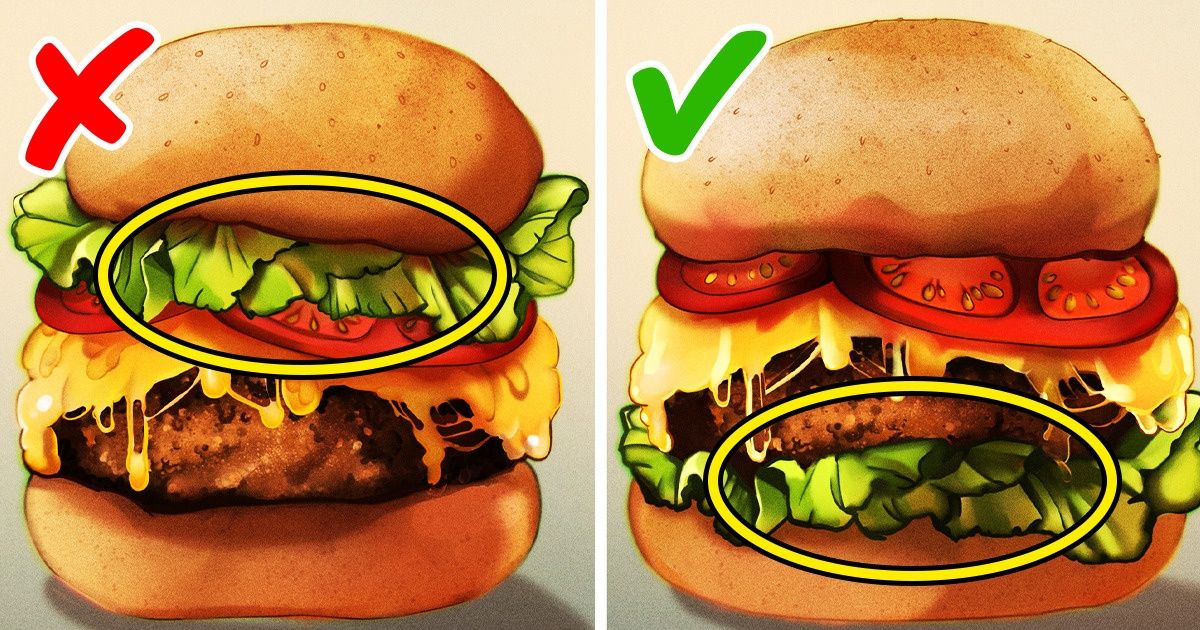
Since burgers are a popular dish all over the world, that means there are lots of different recipes out there. The tips in this article are mostly valid for a regular American cheeseburger, which, broadly speaking, can either be a thin, Shake Shack-like smashed burger or a thick, juicy bistro-like burger.
With that in mind, 5-Minute Crafts compiled a few hacks that can turn a great burger into an amazing one.
1. Use freshly ground beef or grind your own beef at home.
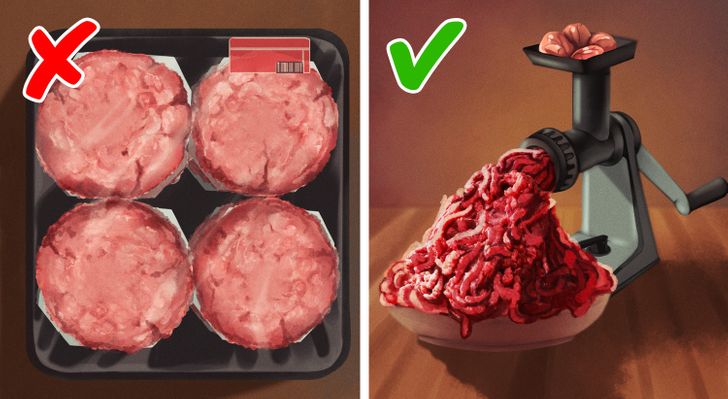
With store-bought ground beef, you can’t be sure when it was ground or even what part of the cow it came from. Rough handling and tight shrink-wrap packaging can lessen the quality of the resulting patties.
Also, and most importantly, the tight, compact structure of the pattie makes the protein in store-bought ground beef stick together much more firmly, which leads to more shrinking as it cooks, less juice, and a denser texture.
Bottom line: There’s no place for lean or finely ground beef in a burger, as they both produce a dry, crumbly patty.
- If you don’t have a grinder at home: Find a good source of freshly ground beef that you trust. Make sure you ask for meat that has at least a 20% fat content. In this case, it’s better to stick to the smash method (smashing down a patty shaped into a hockey puck disk when put on the griddle, then scrape it off when flipping).
- If you prefer to grind at home: You can use a hand-cranked model, a KitchenAid attachment, or even a food processor. These tools give you more flexibility to make both thin and thick patties.
In any case, remember that a coarse mince gives the best texture.
2. Keep the meat and tools cold.
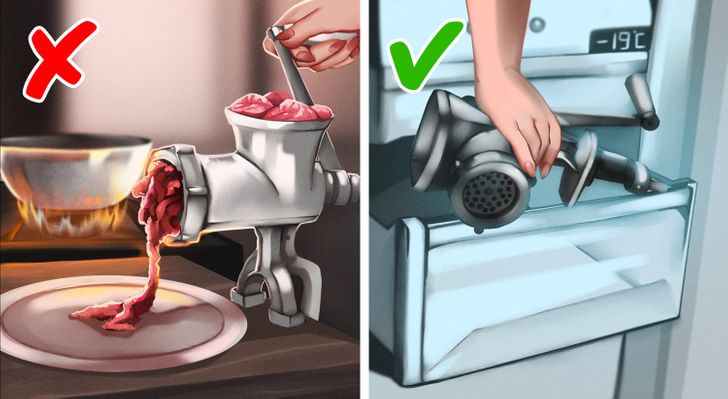
Until your burgers are about to be fully formed patties, stay away from the heat to avoid fat from sticking to your hands and work surfaces. Remember, all the fat that patties need to be perfect won’t be in the burger otherwise. If you grind your own meat, make sure that the feed shaft, the grinding blades, the plate, and the meat are well chilled. You can even keep your meat grinder stored in the freezer, for example.
3. Avoid overworking the meat.
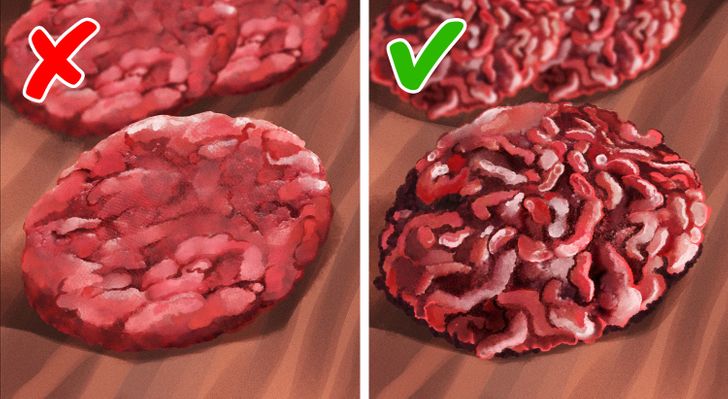
Ground beef is an ingredient that’s “alive.” It changes when you add salt or when you knead it. Working the meat too much will make your finished patties denser and tighter, which is why it’s important to form them as tenderly as possible. Experts will grind the meat directly onto a sheet tray and gently coax it into patties.
4. Keep it simple.
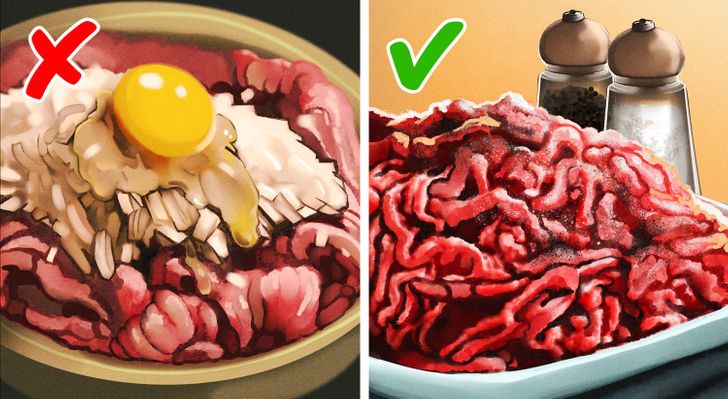
Some recipes call for mixing onion or other ingredients with the ground beef when forming the patties. While you might end up with a fairly original burger with a good, well-selected meat blend, there’s no need to add anything but seasoning to the pattie. That being said, if you still want to add anything to the ground meat, do so before grinding so that it can be evenly distributed without requiring you to overwork the beef afterward.
- Note: Some people think that adding an egg to the meat can help bind everything together. It’s true, but doing that can easily backfire by making patties become dry and fibrous.
5. Season at the right time, in the right way.
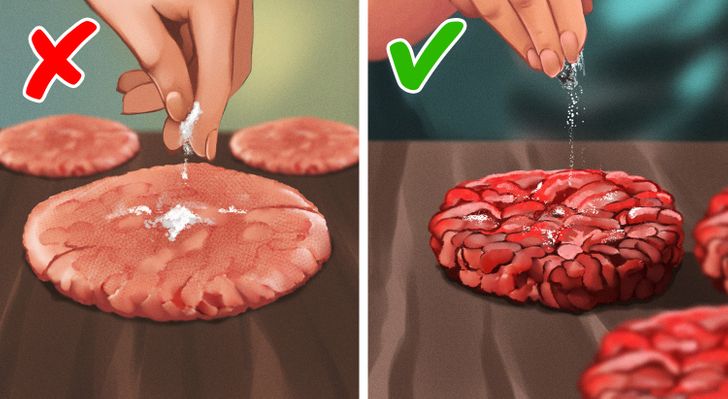
After rubbing a little bit of neutral oil (like vegetable oil) on the patties, it’s time to season them with salt and pepper. Use only freshly ground black pepper from whole peppercorns and a large pinch of kosher salt. Make sure to sprinkle these at least 8 inches above the patties to ensure even coverage.
- Note: The moment in which you season your patties is just as important as your technique. Do not salt your beef until the patties are formed or salt will dissolve muscle proteins, turning patties into sausage-like, springy meat. Instead, wait until they’re about to hit the grill to salt them.
6. Shape patties in the right way.
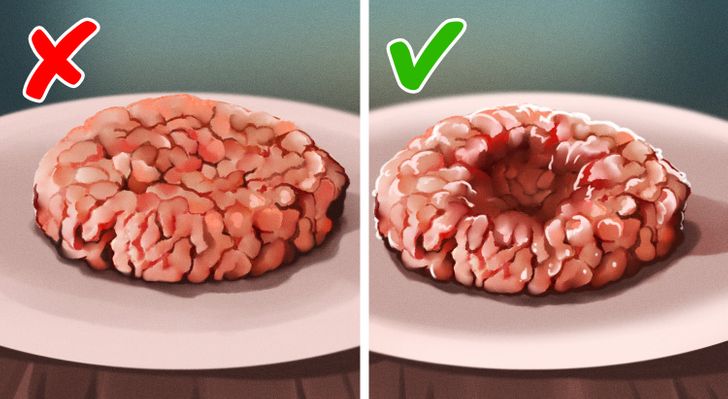
Regardless of the type of burger you’re making, it’s advised to form patties that are bigger than the bun you’re using since they will definitely shrink. When making many burgers at a time, weighing your meat as you divide it will ensure they all cook at the same rate.
When making thicker patties, the meat tends to contract and balloon when it cooks. Use your finger or a spoon to create a depression in the middle. That way they’ll maintain their shapely disk form as they cook. When you see juices pooling in the depression, that’s when it’s time to flip.
7. Flip your patty often.
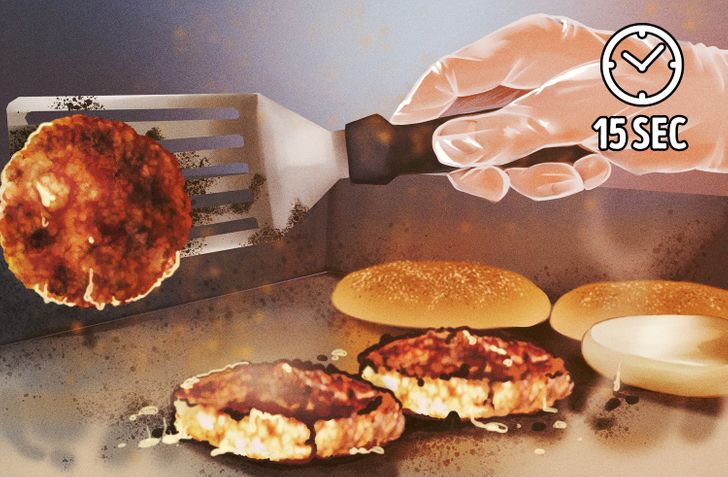
While many people say you should only flip your patty once, doing so repeatedly encourages faster, more even internal cooking. Flipping as often as once every 15 seconds could cut down a third of the grill time.
8. Choose the right bun.
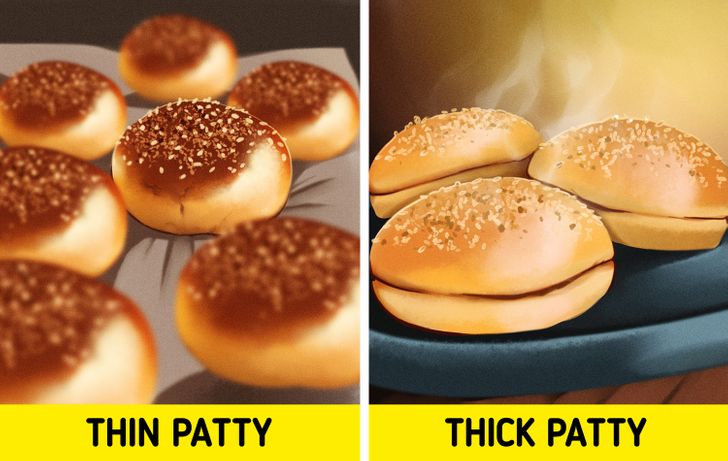
For smaller, thinner patties, potato rolls are the best option. They’re soft, sturdy, and slightly sweet, which makes for a great combination. If you can’t get a hold on these, any soft, squishy, standard-issue supermarket buns will do.
On the other hand, a bigger, pub-style burger will potentially overwhelm such a soft bun with its juices and end up dissolving the base pretty quickly. And while toasting the bun can mitigate some of these effects, you’re better off choosing a custom burger bun from an artisan bakery.
- Tip: Before toasting your buns, spread some mayo on them. The combo of oil and egg in the mayo promotes the formation of a delicious golden-griddled crust.
9. Assemble the burger properly.
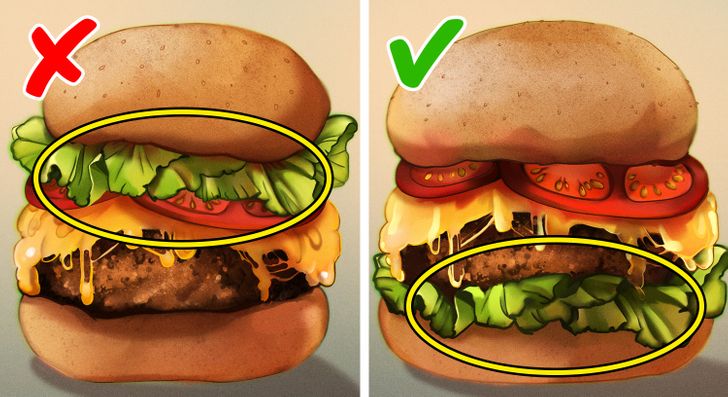
The order in which you assemble the burger is important because doing it right can prevent it from breaking or even staining your clothes:
- Start with the bottom bun, which should be slightly toasted, to hold your condiments in the bread.
- Add ketchup and mustard next.
- Next up are pickles that go under the meat so their strong crisp flavor doesn’t overpower other veggies.
- Add the cooked patty with or without cheese. If you did use cheese, American is the way to go.
- Then comes the slice of tomato. If you played your cards right, the cheese will be melted enough to hold the tomato still. Some people prefer to skip the tomato because it contains too much water.
- Next, add iceberg lettuce, which will act as a blanket to keep the tomato in place as well. If you like onions, you can add some of that now too. Red onion is a good choice because of its taste and color.
- Mayo is better added now because it has a delicate texture that will help hold your veggies here.
- Top everything off with the toasted top bun, and you’re all set.
If you’re making a bacon cheeseburger, it’s best to place the strips of bacon directly on top of the meat, but under the cheese to keep it in place. Since you’ll likely lay the sheet of cheese onto the pattie while it’s still on the grill to be able to cover with a lid for 30 seconds for it to melt, you have to think about adding the bacon at this moment too.
- Tip: Some chefs like to add the lettuce right after you’ve covered the bottom bun with ketchup and mustard to catch the juices. This can come in handy when you’re making a thick, juicy burger.